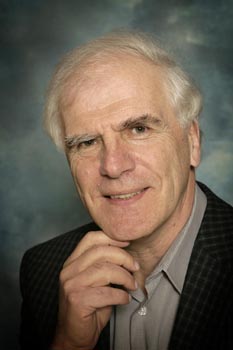Prof Finkelstein current and only A-rated researcher in Probability and Statistics in SA

Prof Maxim Finkelstein
Photo: Johan Roux
|
Prof Maxim Finkelstein from the Department of Mathematical Statistics at the University of the Free State (UFS) received an A-rating from the National Research Foundation (NRF). This makes him the only A-rated researcher in ‘Probability and Statistics’ regarding Mathematical Sciences in the country.
According to the NRF-rating process, a person with an A-rating is a world leader in his field.
Prof Jonathan Jansen, Vice-Chancellor and Rector, said: "I am absolutely delighted for Professor Finkelstein and for the fact that this is one of the clearest signs that the UFS has significantly increased its standards of research across the institution as a whole."
Prof Finkelstein says this rating means a great deal to him, since it is a reflection of his dedication and perseverance.
“Of course, the rating is not a goal in itself,” Prof Finkelstein says. “The goal is the high quality research and the rating is just an objective indication of this. Along with the satisfaction, this rating brings the responsibility for maintaining this high status in the future.”
Prof Finkelstein conducts his general research in the field of ‘Probability and Statistics’, but his specific area of focus is ‘Stochastic Modelling’. Prof Finkelstein solely lectures postgraduate students and also mentors a few master’s and PhD students. This affords him the time to mainly concentrate on his research.
“Finally, I wish to emphasise the fact that high-quality research became the prime goal at the UFS,” says Prof Finkelstein. He underscores the efforts of the Vice-Chancellor and the Vice-Rector: Research in creating excellent possibilities for researchers. This has already resulted in remarkable improvements in the UFS’s research outputs – and consequently an increase in the number of rated researchers at the university.
A total of 119 UFS researchers currently have evaluation and rating status from the NRF, says Nico Benson, Deputy Director: Research Development. Currently (October 2014) 29 researchers are still waiting for response from the NRF regarding applications submitted. A total of 16 ratings are already known. On the Qwaqwa Campus of the UFS, five researchers are rated.
Prof Finkelstein's A-rating will become effective from 1 January 2015. Ratings are valid for a period of six years and researchers are invited to apply for re-evaluation in the fifth year.